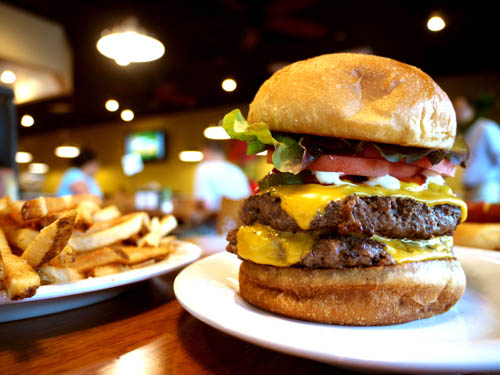 Make a Restaurant-Quality Burger!
Make a Restaurant-Quality Burger!
Super Bowl, Salty Dog Boaters NW Recipe: Cheese Burger is an American favorite, and there’s a million and one different ways to make them. Whether loaded up with garden veggies or basic & plain, however, the burger itself is the hardest part to get right. A good burger should have a pleasantly charred crust, a juicy inside, and a modest amount of fat- unlocking the full flavor that only beef provides.
Although one might get the impression that hamburger is as hamburger does, there’s actually several different varieties of the seemingly simple meat. Regular ground beef beef can have up to 30% fat, and more fat means cheaper but also greasier. Ground chuck has about 20% fat, ground sirloin has 15%, and ground round is very lean at 11%. Less fat means healthier, of course, but such as ground round also tends to be considered pretty bland.
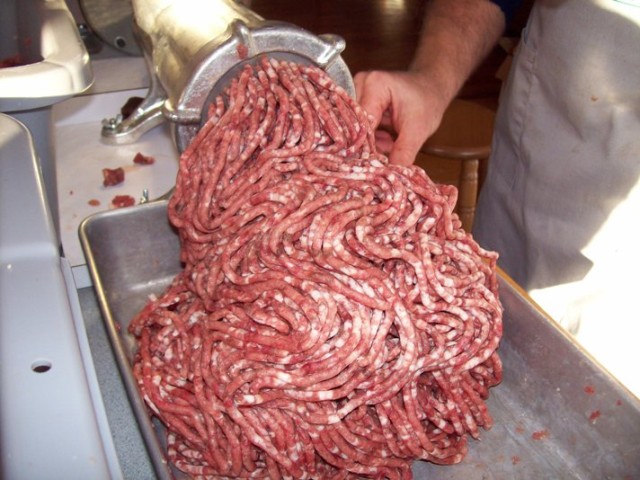 Fresh Ground Meat is Ideal
Fresh Ground Meat is Ideal
Staying in the middle of the fat equation is usually your best bet if you’re looking for a balance of flavor, price, and healthiness. Chuck’s 20% fat makes for better flavor, but sirloin is far more versatile. Pay attention to the labels, though- the percentages aren’t universal from brand to brand! You’ll want to look close and make your pick accordingly.
It’s highly recommended to get your meat as fresh as possible. While beef certainly isn’t fish, the longer it takes to get from being ground to your mouth means the longer that bacteria can potentially grow and mix with your meat. Try to go for fresh meat that’s ground on-site from your grocer or butcher, as it’ll taste better, cook better, and be safer to eat if you prefer your burgers to be more on the rarer end of the spectrum. If you can get it ground as you wait, even better!
Seasoning Your Burger
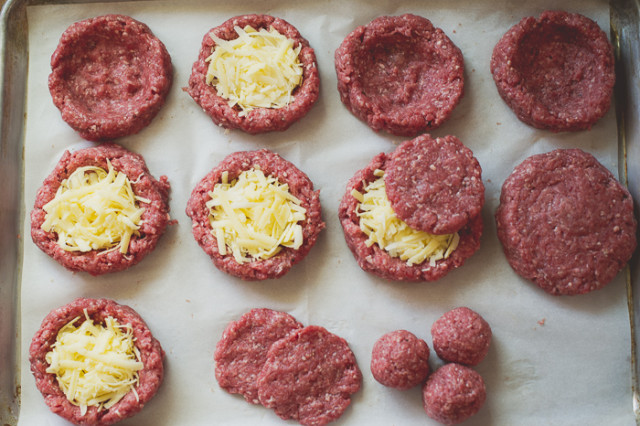 Add Ingredients to Your Burger Middles for New Twists on an Old Classic
Add Ingredients to Your Burger Middles for New Twists on an Old Classic
There’s more than one school of thought on seasoning your burger, but it primarily falls into one of two camps: those who do, and those who don’t. Some say it’s best to just keep the meat pure- and it’s not recommended to add too much before you’re ready to cook in any case. Variations to try include adding butter to your burger if it’s going to be cooked to medium or more, which will keep your meat moist as it goes brown in the center, or mixing your meat with shredded cheese- a great variation on the standard cheeseburger. Besides the obvious cheddar, consider adding feta or bleu cheese chunks for a decadent variation on your standard patty.
Making the Patties
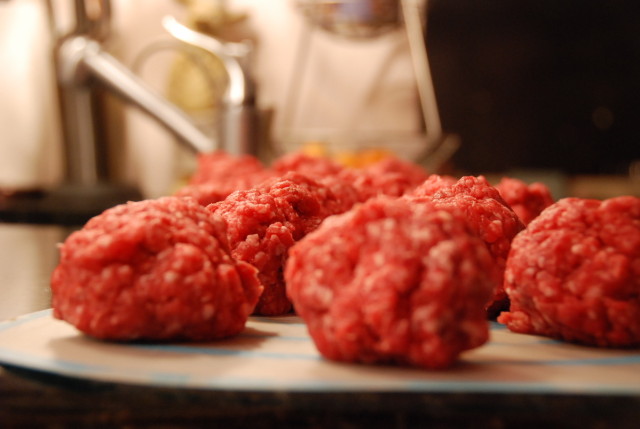 Get Your Hands Cold Before Making Patties
Get Your Hands Cold Before Making Patties
Get your hands cold and moist! Run them under cold running water to get them chilly, then work quickly & gently so as not to bruise or heat the meat. Being careful means your burgers won’t end up too dense and/or firm to cook evenly, and keeping them cold means the fat won’t melt; thus leading to a tougher burger. One inch thick patties are ideal, as they allow for enough meat that you can get a seared crust on the outside while keeping a pink inside. Consider also putting your patties back in the fridge for an hour after forming- they’ll stay together better when you go to flip them on the grill.
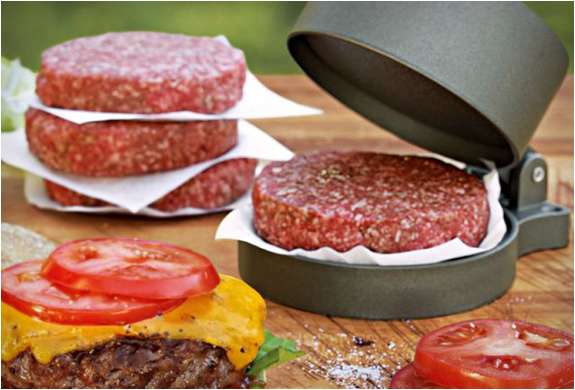 Tools for Easier Patty Forming are Available
Tools for Easier Patty Forming are Available
Final Prep
You’ll notice we didn’t recommend adding salt or pepper in the seasoning step- there’s a reason for that. Adding salt or pepper too early will displace moisture in your ground meat mix, leading to tougher and less consistent burgers. However, this doesn’t mean you shouldn’t be adding them- salt & pepper both go a very long way to making a better burger. Just add them as a last step, immediately before grilling, and you’ll get the best benefits and the least drawbacks.
Cooking the Burger
If you’re grilling, start with a cleaned, oiled, and hot grill. Make sure you have one half of your grill hot and another less so. Sear your burgers over the high heat until a crust forms on the outside of the meat, then transfer to lower temp section for final internal cooking. Do NOT press your burgers down on the grill- it’ll just squeeze out the fat & moisture, leading to a difference you can taste. Don’t bother with sauces on the grill- the benefits are minimal to nonexistent, cover the flavor of the meat, tend to make a hard-to-clean mess, and ultimately are better applied by the person actually about to eat the thing.
 Pay Attention to Your Meat!
Pay Attention to Your Meat!
If you’re using a pan, the technique is pretty much the same- cook on high heat to form a crust, don’t press them down, and lower the heat when you’re ready to finish the cooking of the insides.
Knowing When They’re Done
If you have a meat thermometer, the standard is as follows: 145F for medium-rare, 160F for medium. This is the most accurate way to know if your meat is ready, but an experienced grillmaster can also look for the telltale signs.
Poke the meat- medium-rare tends to move easy, medium is fairly firm, and well-done is noticeably firm. You can also take a look at the juices- when juices come out the top, it’s medium. When those juices ooze out and then get cooked, it’s medium well. Using all the tricks available to you is the secret to being an all-around master of meat!

Boaters, Try This Recipe & Make the Burger of Your Dreams!








